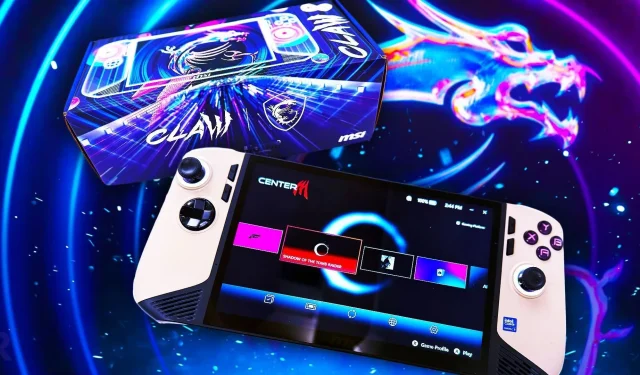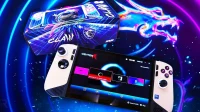In 2024, MSI took a bold step with its inaugural Claw 7, differentiating itself in a market predominantly filled with AMD-based handhelds by opting for an Intel processor. This decision, however, yielded mixed results. The device featured an Ultra 7-155H chip that struggled to meet performance expectations unless plugged into an outlet, making it less practical for mobile use. The relatively small 53Wh battery further constrained the usability of the Claw 7, falling short against its competitors.
However, the narrative changes significantly with the introduction of the MSI Claw 8 AI+ in 2025. Despite the somewhat cumbersome name, this new handheld device—hereafter referred to as the Claw 8—addresses several of the previous model’s shortcomings. While it may not yet match the level of refinement offered by competitors like Valve and ASUS, the Claw 8 provides enough distinctive features to justify consideration if you are shopping for a new portable gaming PC. This is a notable upswing from its predecessor.
Key Specifications of the MSI Claw 8 AI+
What Can You Expect for the Price?
One vital question arises concerning whether the Claw 8’s enhancements justify its price tag of $899.99. Are these upgrades worthwhile, or does a significant downside remain? Here are the specifications for the device under review:
|
Processor |
Intel Core Ultra 7 258V |
|---|---|
|
Memory |
32 GB LPDDR5x-8533 |
|
Storage |
1 TB (M.2 2230, NVMe PCIe Gen4) |
|
Display |
8″FHD+ IPS (1920 x 1200), 16:10, 120Hz VRR |
|
Battery |
80Wh |
|
Operating System |
Windows 11 Home |
Now, let’s explore what the MSI Claw 8 has to offer.
Revisiting Strengths from the Claw 7 with Notable Enhancements
Highlighting the Display
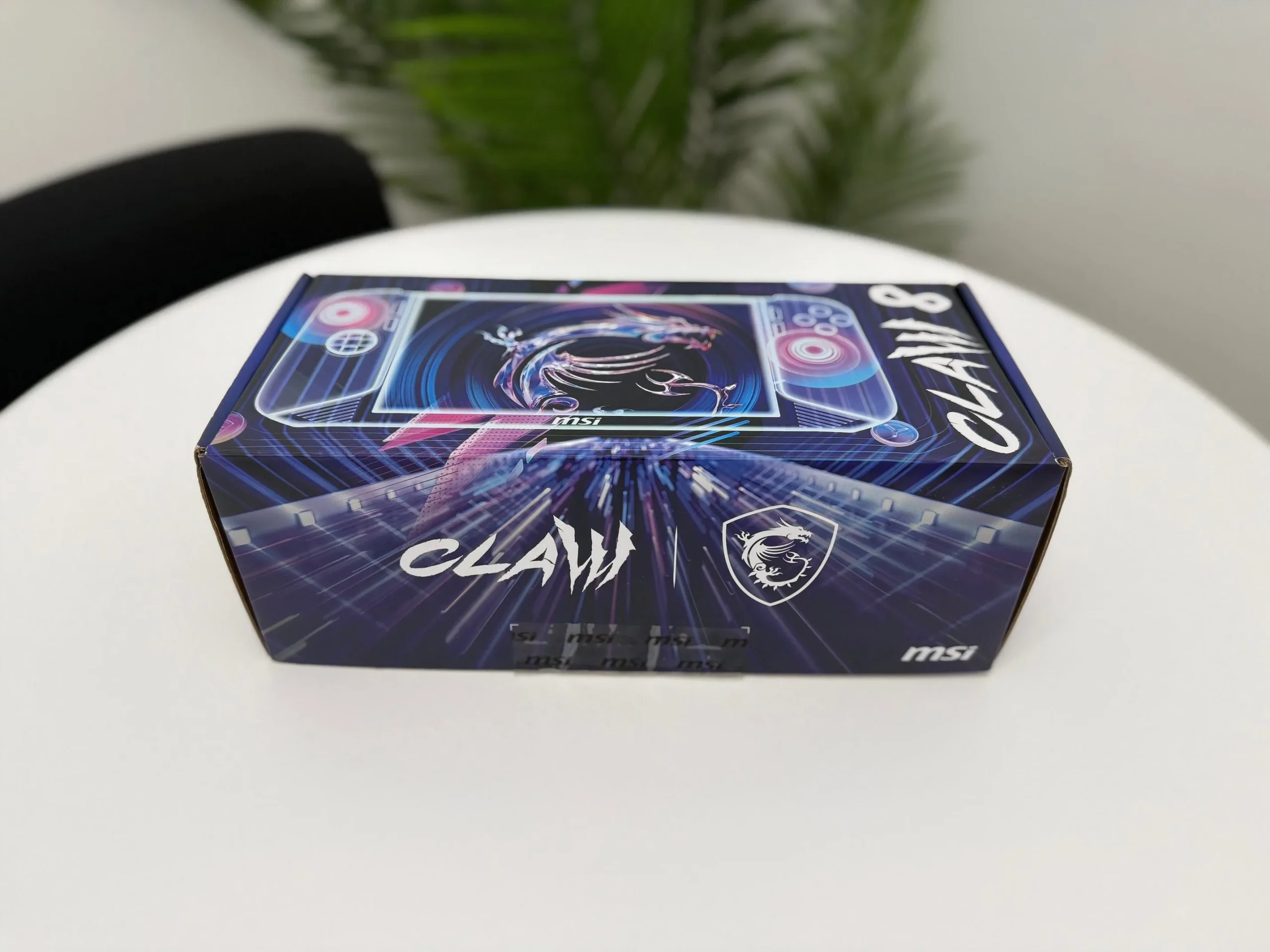
Let’s clarify that last year’s Claw 7 was not entirely forgettable. While it had its flaws, there were aspects of the design that stood out, and many of those strengths have successfully transitioned into the Claw 8. The device is equipped with tactile face and shoulder buttons that provide satisfying feedback, alongside joysticks that approximate the feel of a console controller. Additionally, the inclusion of adjustable backlit buttons and Hall effect triggers minimizes the likelihood of stick drift while enhancing accuracy.
Overall, the Claw 8 shows clear refinement in external design, which was already good in the Claw 7. However, what truly stands out this time is the display: an impressive 8-inch screen with a resolution of 1920 x 1200. The color vibrancy is striking, and the larger screen size enhances immersion significantly compared to smaller devices. For instance, during gameplay in Rocket League, my performance noticeably improved, validating the benefits of the Claw 8’s larger and sharper display.
While the display lacks OLED technology, many manufacturers prefer LCD panels due to their availability and cost-effectiveness, blended with support for variable refresh rate (VRR) technology. By synchronizing the display’s refresh rate to the game’s frame rate, VRR minimizes visual disruptions such as stutters and tearing, enhancing user experience, particularly in graphically demanding titles.
It’s worth noting that while gamers who enjoy visually undemanding genres may miss the now-popular OLED screens, VRR proves invaluable for more intensive gaming. I appreciate its presence—as first seen in the Claw 7—and find the compromise acceptable.
The audio output from the Claw 8 is satisfactory. While I personally prefer using headphones, the front-firing speakers perform adequately. There were no significant audio issues to report, and their placement adds to the overall gaming experience.
When it comes to ergonomics, the Claw 8 strikes a favorable balance. The 8-inch form factor is comfortable to hold, providing ample surface area for a secure grip without feeling cumbersome. This larger design allows for better joystick and button placement, elevating the portable gaming experience closer to that of traditional game controllers.
In terms of comfort, the MSI Claw 8 is commendable, though it may sit just above average. It doesn’t provide the seamless comfort of Lenovo’s Legion Go S, my current benchmark in this category, yet it still avoids being uncomfortable to use. Weight distribution is well-balanced, and every button is within easy reach. Overall, the device’s ergonomics are solid.
However, I do wish for a minor redesign. Making the handheld slightly wider and adjusting the position of the right joystick just a fraction could enhance its overall feel. As it stands, my thumb needs to bend a bit to reach the stick—something that would be more natural on a standard Xbox or PlayStation controller.
Next, let’s discuss the aesthetic aspect of the MSI Claw 8. The device features a sandy tan body with black accents and grips. While its rugged design hints at durability, it evokes a more utilitarian look than a gaming device. This choice of color may not resonate with everyone, and many would argue that a sleeker, darker color scheme could better convey its gaming capabilities.
Everyone seems to gravitate toward black for handheld devices, offering seamless integration into various environments. Acknowledging design trends is important, particularly in the gaming community.
Identifying Software Limitations of the Claw 8
Addressing Concerns with MSI Center M
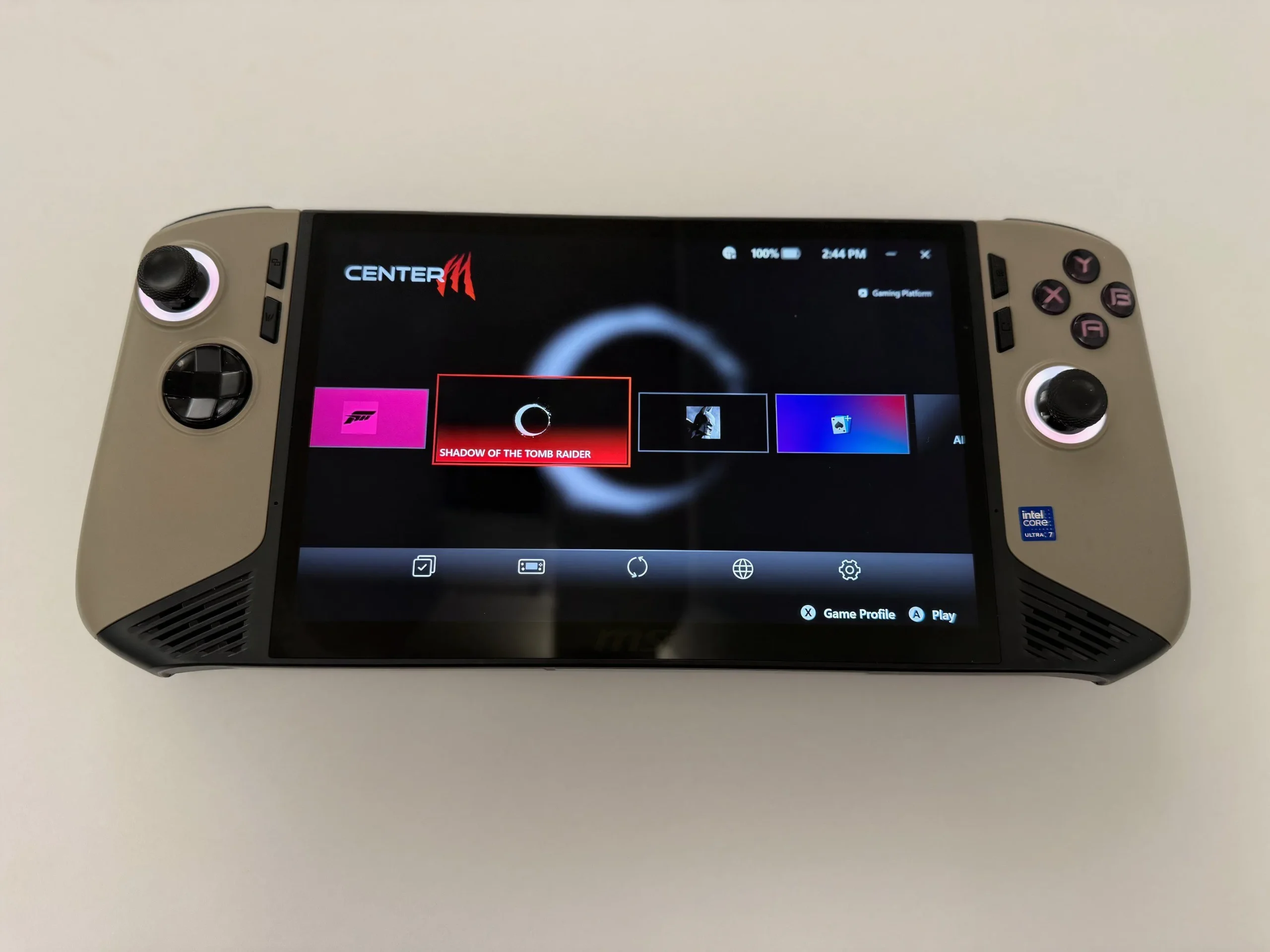
In 2024, the Claw 7’s performance shortcomings overshadowed its software limitations, which were glaring yet often overlooked. With the Claw 8 featuring a far superior chipset, expectations were high for MSI’s software improvements. Unfortunately, these expectations have not yet been met.
MSI Center M feels rudimentary at best, lacking the depth necessary for a satisfying user experience. The platform allows you to launch games quickly and switch between performance modes, but it lacks stability and customization. At times, the software simply crashes or becomes unresponsive, forcing a system reboot for resolution, which is inconvenient.
The game library interface appears underwhelming, lacking polish and cohesiveness. In addition, the absence of intuitive navigation detracts from the first experience. It’s clear that MSI needs to invest time and resources into enhancing this software to align it with the hardware’s capabilities.
The limited configurability is another disappointment. There are no specific performance settings or options to remap controls for individual games, and users have a constrained ability to manage power settings. MSI supplies only three performance modes: Endurance, AI Mode, and Manual. While the Manual mode allows power settings at fixed thresholds (8W, 17W, or 30W), it doesn’t permit finer adjustments, which dedicated gamers often seek.
With Windows historically falling short as an operating system for handheld devices, the onus falls on manufacturers to elevate the user experience. Regrettably, MSI’s current software feels more like a hurdle than an aid to enjoying the Claw 8. However, there is potential for improvement if MSI dedicates adequate effort to this area.
Performance: The Claw 8 Sets a New Benchmark
Experience Epic Gaming in 1200p
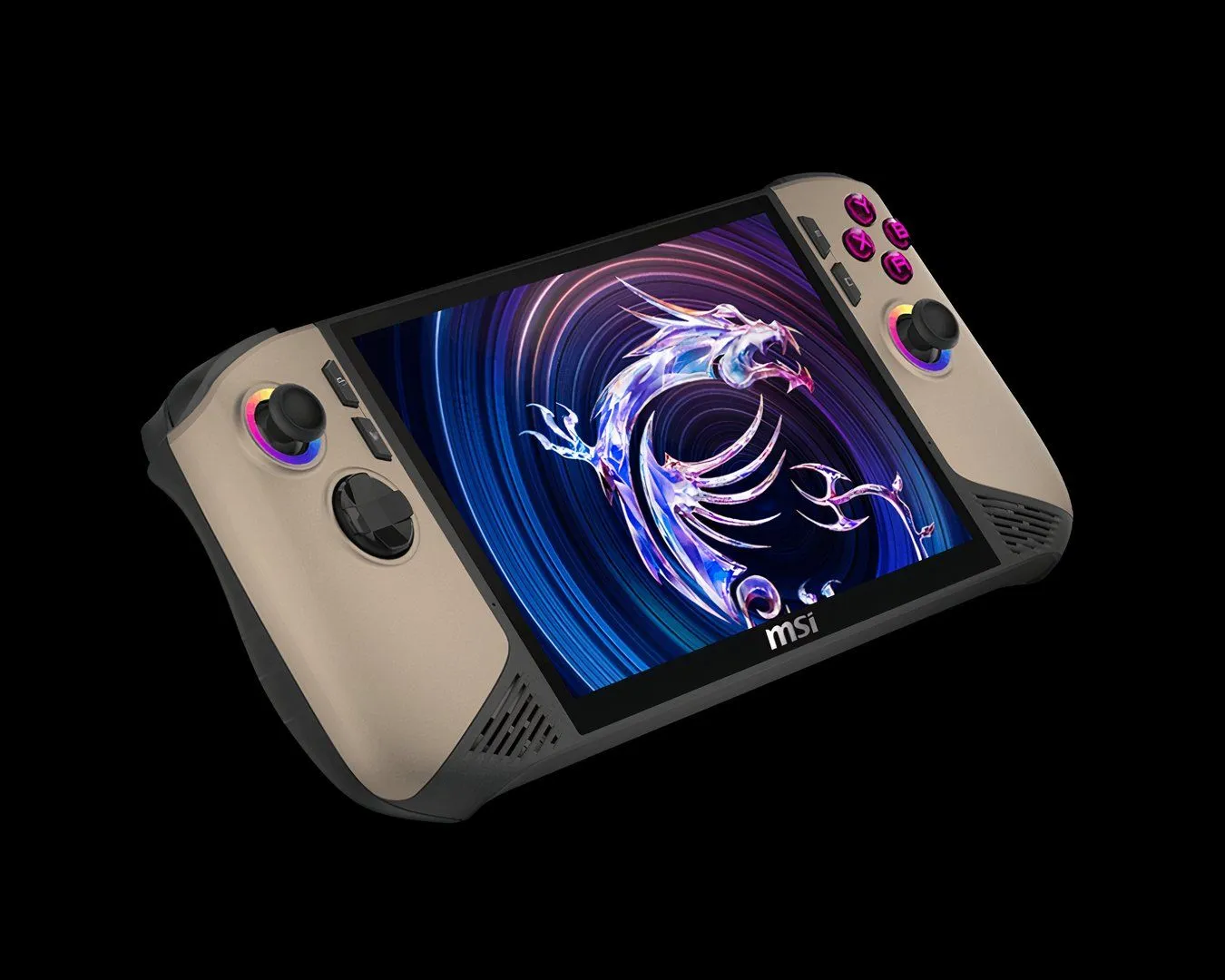
Now for the highlight—performance is where the Claw 8 shines compared to the previous model. This handheld is the first PC device to support a resolution above 1920 x 1080 comfortably, and the native resolution is a boon for gameplay. This is a significant improvement.
Boasting an expansive 80Wh battery—nearly 50% larger than the Claw 7’s 53Wh—the Claw 8 stands to benefit from enhanced performance along with new efficiencies paired with this increased capacity.
To understand the power modes better, let’s break down their functions:
- Endurance Mode: Aimed at reducing resource consumption, this mode typically targets a capped frame rate of 30 FPS, although settings can be adjusted within Intel’s software.
- AI Mode: Here, the system can apply AI-driven adjustments, balancing resources dynamically. Users can expect to achieve 3-4 hours of battery life in this mode.
- Manual Mode: Users can set fixed power levels (8W, 17W, or 30W). In my testing, 8W was almost unusable for launching any games, while at 17W, you can expect 3-4 hours of playtime, but 30W reduces battery life to around 2 hours.
Keep in mind, these battery life estimations represent the worst-case scenarios. Gaming with less demanding titles like Celeste will extend battery life compared to more resource-hungry games like Cyberpunk 2077.
Let’s take a look at how the Claw 8 performed in various titles:
|
Game |
Settings |
Resolution |
Power Setting |
FPS |
|---|---|---|---|---|
|
Elden Ring |
Low |
1200p |
30W |
50 |
|
Elden Ring |
Low |
1200p |
AI Engine (Variable) |
35 |
|
Elden Ring |
Low |
1200p |
17W |
36 |
|
Game |
Settings |
Resolution |
Power Setting |
FPS |
|---|---|---|---|---|
|
Shadow of the Tomb Raider |
Low |
1200p |
30W |
72 |
|
Shadow of the Tomb Raider |
Low |
1200p |
AI Engine (Variable) |
52 |
|
Shadow of the Tomb Raider |
Low |
1200p |
17W |
52 |
|
Game |
Settings |
Resolution |
Power Setting |
FPS |
|---|---|---|---|---|
|
Forza Horizon 5 |
Low |
1200p |
30W |
71 |
|
Forza Horizon 5 |
Low |
1200p |
AI Engine (Variable) |
60 |
|
Forza Horizon 5 |
Low |
1200p |
17W |
60 |
|
Game |
Settings |
Resolution |
Power Setting |
FPS |
|---|---|---|---|---|
|
Batman: Arkham City |
Low |
1200p |
30W |
183 |
|
Batman: Arkham City |
Low |
1200p |
AI Engine (Variable) |
136 |
|
Batman: Arkham City |
Low |
1200p |
17W |
137 |
Ultimately, the Claw 8 impresses with its performance, nearly surpassing expectations compared to the Claw 7. Significant credit is due to not only MSI for implementing more effective hardware but also Intel for providing a capable chip. Notably, the 258V processor demonstrates an extraordinary advantage over the 155H of the earlier model, exhibiting enhanced efficiency at lower power and increased performance at higher wattages.
The Claw 8’s ability to comfortably handle a resolution of 1920 x 1200 without requiring downscaling is a major shift for the industry. Previously, many handhelds pushed higher resolutions without suitable power, necessitating reduced settings. My skepticism toward the 1200p display at first has been dispelled, showcasing that with the right power available, this resolution is not only achievable; it’s advantageous.
For those interested, here are performance metrics after downscaling to 800p:
|
Game |
Settings |
Resolution |
Power Setting |
FPS |
|---|---|---|---|---|
|
Elden Ring |
Low |
800p |
30W |
55 |
|
Elden Ring |
Low |
800p |
AI Engine (Variable) |
42 |
|
Elden Ring |
Low |
800p |
17W |
42 |
|
Game |
Settings |
Resolution |
Power Setting |
FPS |
|---|---|---|---|---|
|
Shadow of the Tomb Raider |
Low |
800p |
30W |
90 |
|
Shadow of the Tomb Raider |
Low |
800p |
AI Engine (Variable) |
66 |
|
Shadow of the Tomb Raider |
Low |
800p |
17W |
65 |
|
Game |
Settings |
Resolution |
Power Setting |
FPS |
|---|---|---|---|---|
|
Forza Horizon 5 |
Low |
800p |
30W |
89 |
|
Forza Horizon 5 |
Low |
800p |
AI Engine (Variable) |
68 |
|
Forza Horizon 5 |
Low |
800p |
17W |
59 |
|
Game |
Settings |
Resolution |
Power Setting |
FPS |
|---|---|---|---|---|
|
Batman: Arkham City |
Low |
800p |
30W |
264 |
|
Batman: Arkham City |
Low |
800p |
AI Engine (Variable) |
204 |
|
Batman: Arkham City |
Low |
800p |
17W |
203 |
By opting for lower resolutions such as 800p, users will notice performance increases in frame rates. Nevertheless, with the advantages of VRR, I’m inclined to favor the 1200p resolution for gaming. The clarity of visuals against lower resolutions makes a significant difference.
With games like Destiny 2, better visuals enhance targeting accuracy, while Forza Horizon 5 allows for richer environmental appreciation—a stark contrast from the limited visuals on smaller handhelds.
Notably, even in GPU-demanding titles like Rocket League, the combination of a higher resolution and a broad display makes gameplay enjoyable. Though Rocket League may seem simplistic, the immersive depth provided by the Claw 8’s display is impressive, maintaining high visual quality comparable to playing on larger screens.
Lastly, you may observe little difference between the AI Mode and Manual Mode at 17W based on the data I collected. It is satisfactory to consider AI Mode as a straightforward equivalent. This simplifies your options, as users can easily set their Manual mode to 30W and switch between power settings using quick access menus.
Determining Value: Is the Claw 8 Worth It?
Strengths and Areas for Growth
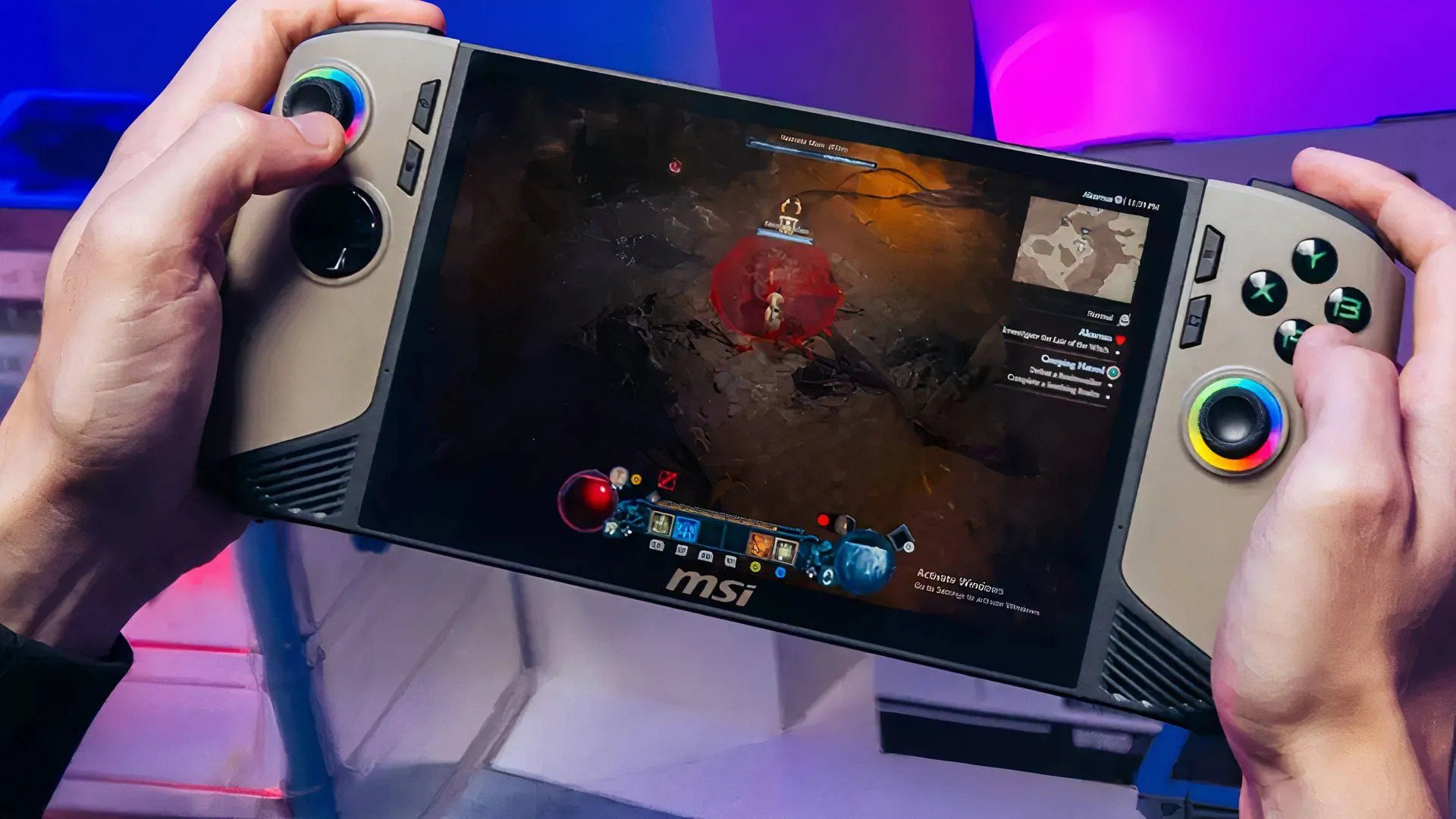
The MSI Claw 8 is priced at $899.99, positioning it among the higher-priced handheld PCs currently available. Is this cost justifiable for everyone? That’s up for discussion. However, I believe it’s a solid purchase for those who understand its offerings.
While the Claw 8 delivers commendable functionality, design features, and technical prowess—especially its ability to play games at 1200p with VRR—it isn’t without shortcomings. A significant area for improvement lies in the software experience, which hampers the device’s overall potential.
MSI must focus on enhancing reliability, usability, and customization features in its software interface to enhance user experience. As it stands, the software can feel like an impediment, detracting from what could otherwise be an enjoyable product. Gamers who want deeper control may find the existing software limitations frustrating.
I myself am still contemplating a purchase of the Claw 8. If you’re shopping for your first portable gaming device and find the specs appealing while the software isn’t a paramount concern, I would recommend proceeding with the purchase. It delivers solid gaming performance. For those seeking a near-perfect device in this price range, the Claw 8 may fall short.
ScreenRant received a Claw 8 AI+ from MSI for this review.
